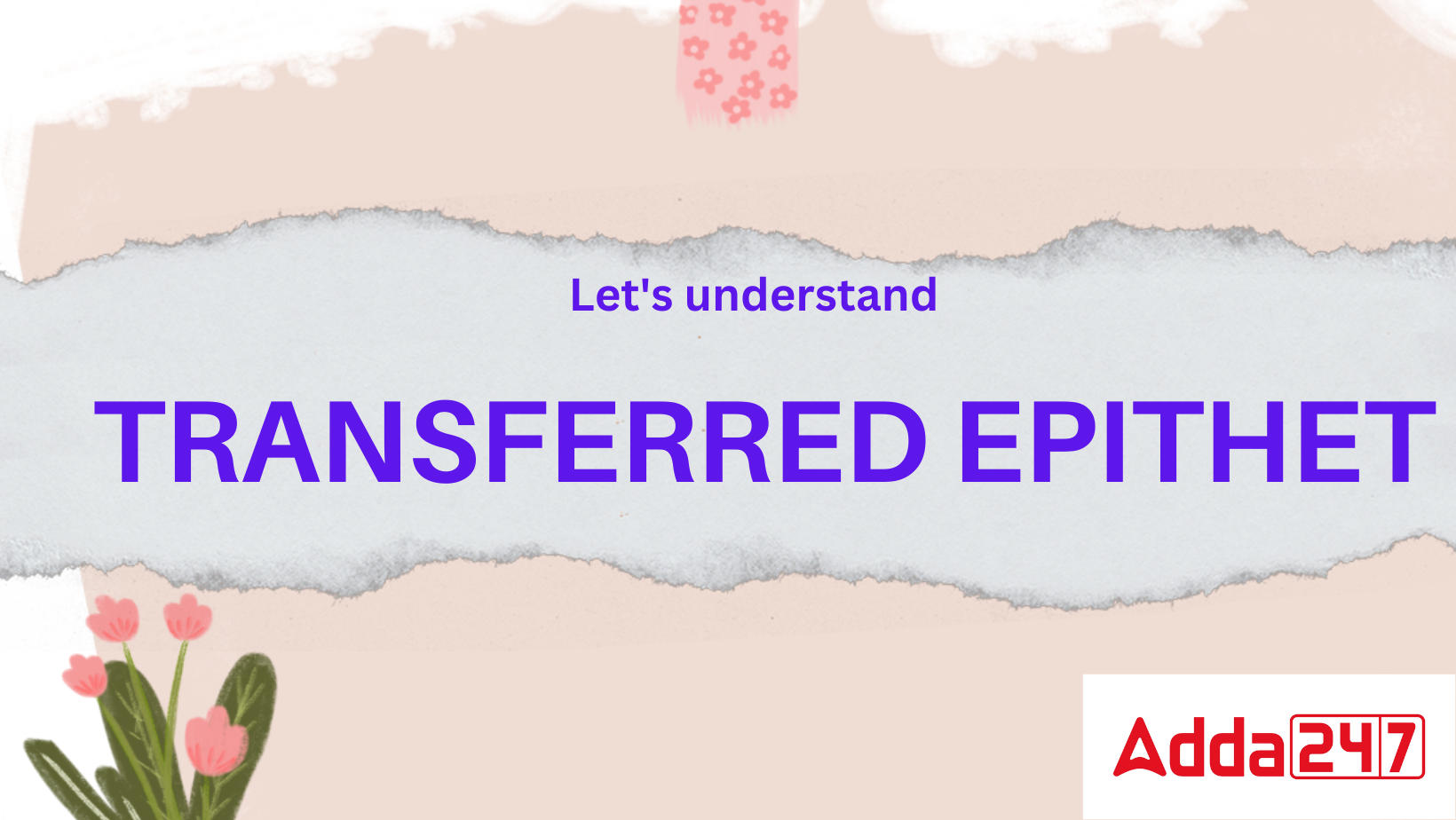Table of Contents
Transferred Epithet Meaning
A transferred epithet is a little-known but frequently employed figure of speech in which a modifier (typically an adjective) qualifies a noun other than the person or object it is actually describing. In other words, the adjective or modifier that is meant to characterise one noun in the sentence gets shifted to another noun in the sentence.
Transferred Epithet Figure of Speech
As the name implies, a transferred epithet is a figure of speech created by transferring an epithet. An adjective or adverb that modifies a noun in a sentence—most often the subject—is referred to as an epithet. However, in order to create a transferred epithet, this epithet is moved from the noun it is truly intended to describe to another noun in the phrase (most likely the noun that replaces the object). For instance, the adjective memorable in the phrase “we had a memorable day” refers to people having a memorable experience rather than the day itself.
Let’s look up a few definitions in dictionaries to get a better understanding of what a transferred epithet is. A transferred epithet is created when “an adjective appropriate to one noun is attached to another by association,” according to the Oxford Dictionary of Literary Terms. An epithet is defined as “an adjective or phrase that is used to describe somebody’s/character something’s or most important quality, especially in order to give praise or criticism.” An epithet is described as “an adjective added to a person’s name or a phrase used instead of it, usually to criticize or commend them” by the Cambridge Dictionary.
Transferred Epithet Poetic Device
After reading the meaning and description of a transferred epithet, if you’re wondering how to create one, the following information will help. Make sure you are clear on what you want to describe or the impression you want to achieve before creating a transferable epithet.
For instance, you could say, “I did not sleep all night,” if you wanted to indicate that you had trouble sleeping because of a power outage or because someone left the lights on all night. I may have had a restless night. Which of these, in your opinion, would have a more favourable and durable effect? You did not obtain much sleep, as was stated in the first sentence. The second phrase also implies the same thing, but you paint a much clearer image of the same by using the adjective “sleepless” to describe the night when it genuinely reflects what occurred to you.
Many of you frequently and unintentionally employ transferable epithets. You would either respond, “I had such a great day,” or “I had such a dreadful day,” when asked how your day was. You don’t often say, “My day was amazing.” This is primarily due to the fact that your experience, not the day, is considered.
Transferred Epithet vs Personification
So, if you’re wondering if personification can also be used to depict an intangible concept or thing, the answer is yes. The difference between a transferred epithet and personification is that personification is used to personify a specific item or idea, whilst the transferred epithet is not. For a better understanding of how the two figures of speech differ from one another, look at the table that is provided below.
| Transferred Epithet | Personification |
| Transferred Epithet refers to the use of an adjective or a phrase that describes a noun to modify another noun in the sentence. | Personification is characterised by the action of personifying or associating human attributes to an inanimate object, an abstract idea, or a quality. |
| It is identified by the adjective or phrase that describes the noun in the sentence. | It can be identified by locating the noun that is being personified and the verb that lets the personification happen. |
| For example:
The teacher pointed an angry finger at the class. |
For example:
“Death lays his icy hands on kings” – James Shirley. |
Transferred Epithet Examples
Now, go through some more common examples of transferred epithets from literature and day-to-day conversations to completely understand how they work.
-
- “Of noble natures, of the gloomy days,
Of all the unhealthy and o’er-darkened ways” (‘Endymion’ by John Keats)
-
- “But Custard cried for a nice safe cage.” (‘The Tale of Custard the Dragon by Ogden Nash)
- “And the sea, which appears to have changed less
Washed their terribly transient feet.” (‘A Photograph’ by Shirley Toulson)
-
- “The snake trying
to escape the pursuing stick” (‘The Snake Trying’ by W. W. E. Ross)
- “The plowman homeward plods his weary way.” (‘Elegy Written in a Country Churchyard’ by Thomas Gray)
- We had such a wonderful time at the movies yesterday.
- I have a satisfying job.
- We had a friendly conversation.
- The four men who committed the murder were put in the condemned cell.
- They seemed to have an unhappy marriage.



 UP, MP, CBSE Board Result 2025 Live Upda...
UP, MP, CBSE Board Result 2025 Live Upda...
 CUET UG Exam Date Sheet 2025 @cuet.nta.n...
CUET UG Exam Date Sheet 2025 @cuet.nta.n...
 KCET Physics Question Paper Answer Key 2...
KCET Physics Question Paper Answer Key 2...










